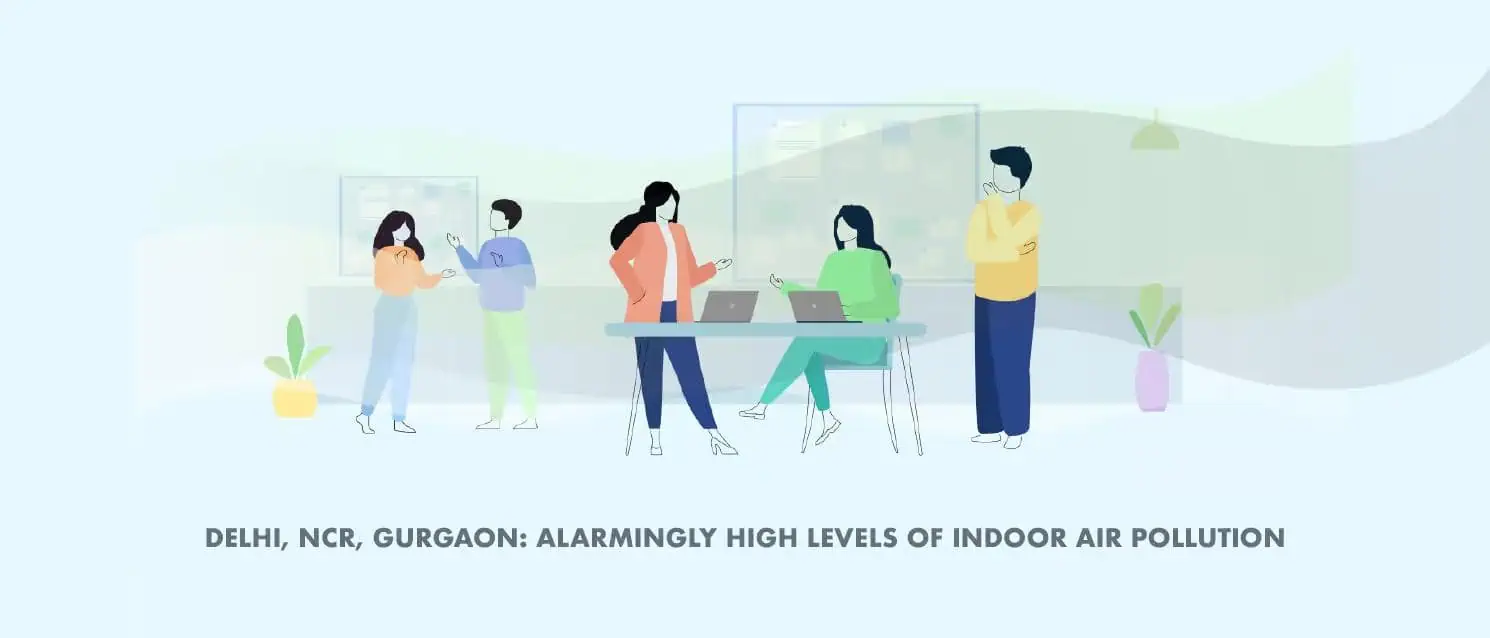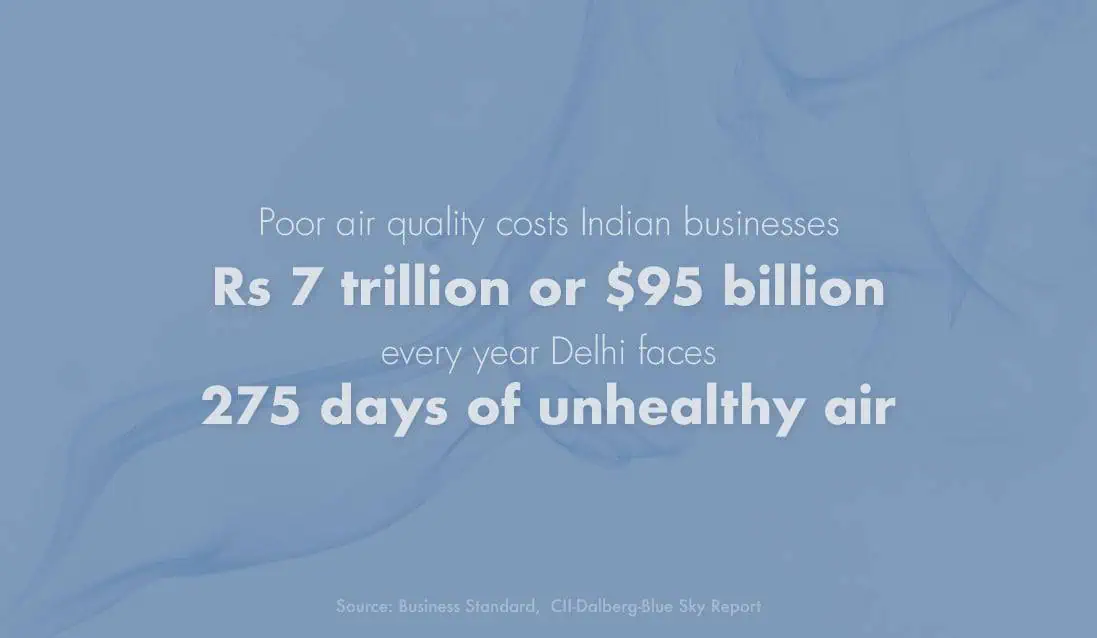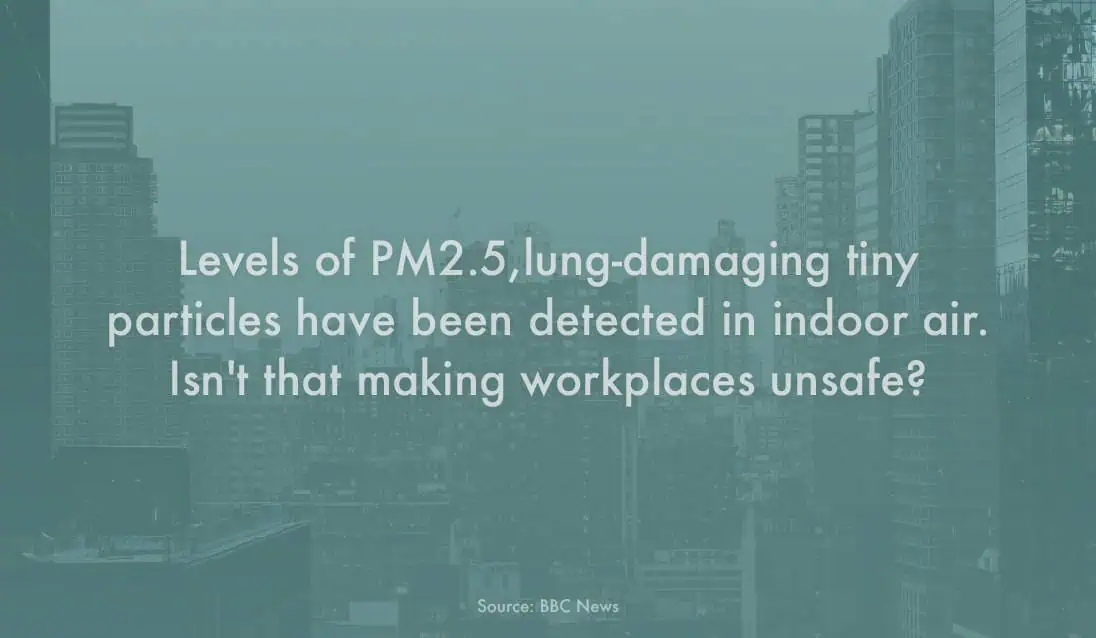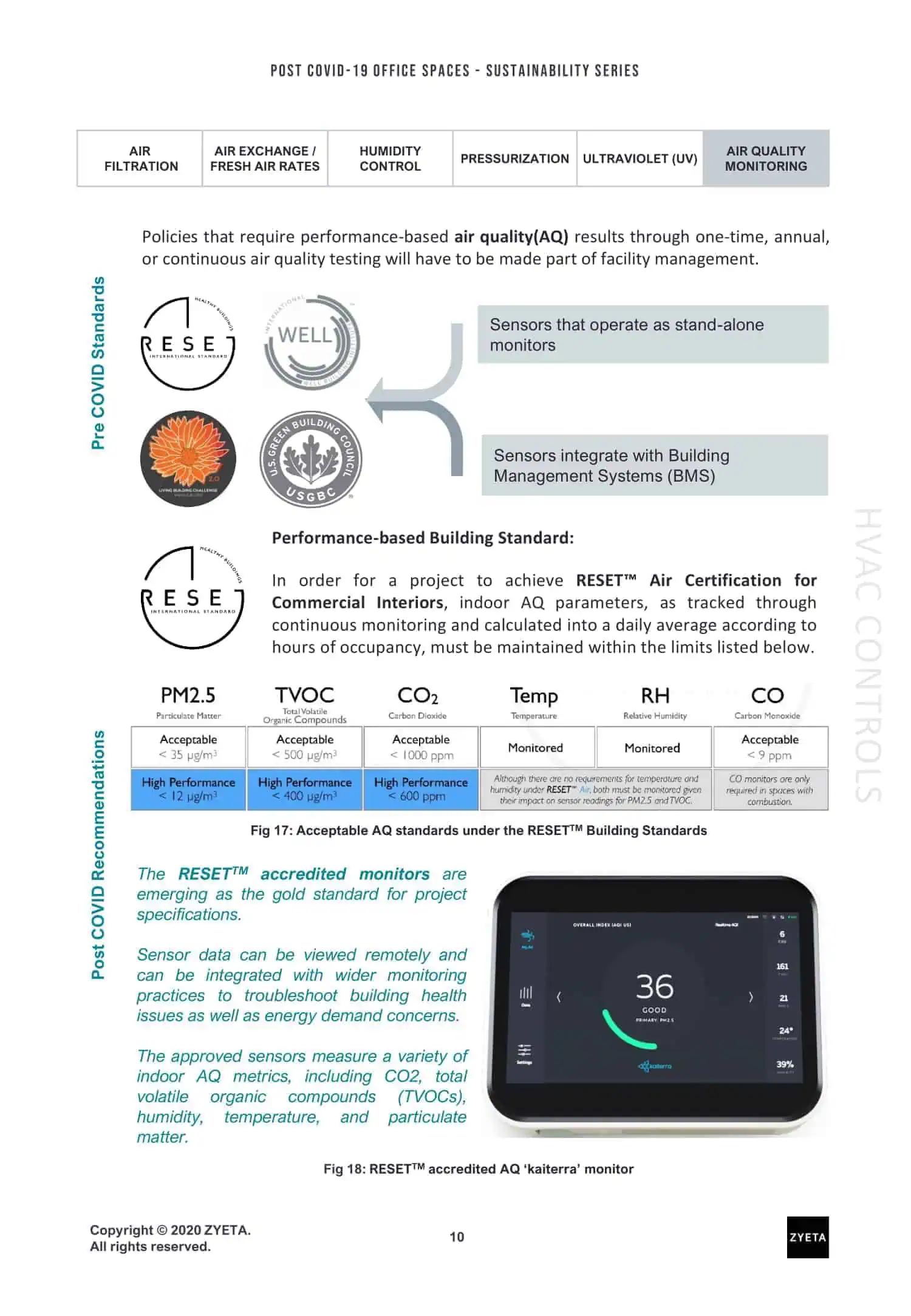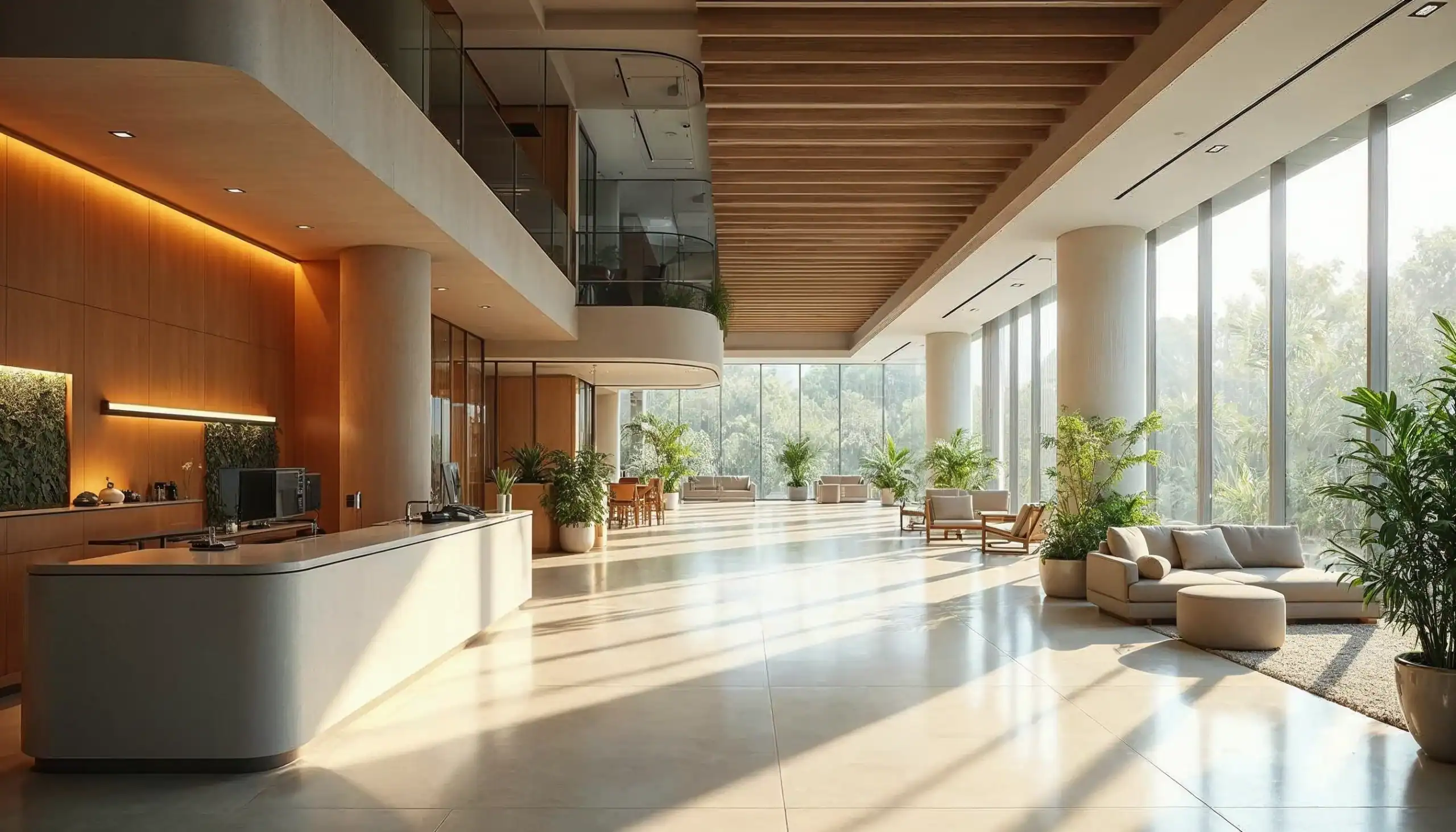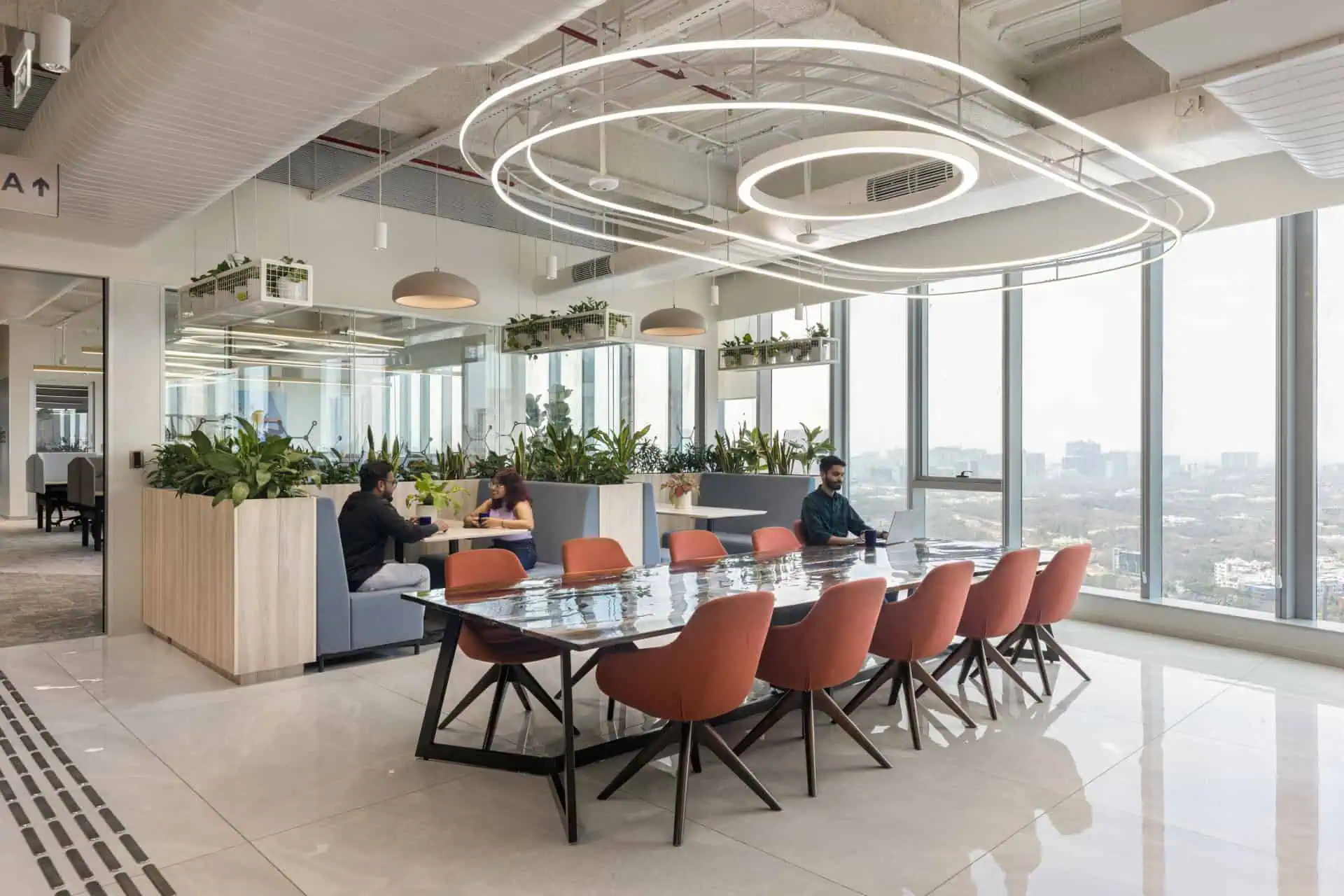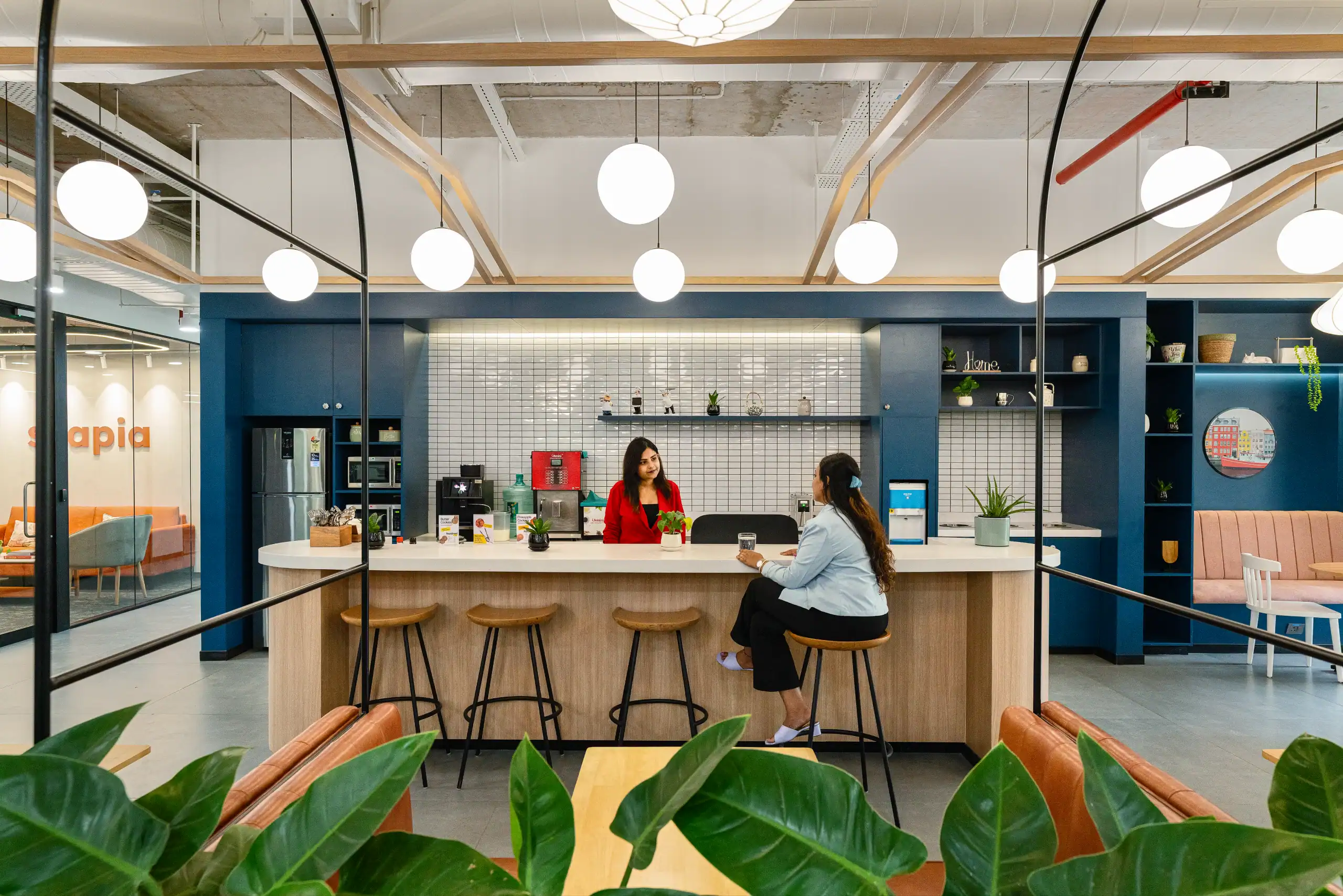You take two million breaths inside your office.
That is, in a ‘typical year’, as pointed out by Harvard Business Review.
Considering that, isn’t it important that we start looking at workplace experience beyond the visual experience and focus on spatial experience, especially indoor air quality?
Over time there has been a shift in employee well-being and experience at the workplace giving rise to newfound dimensions of design such as air, light, temperature, etc.
Declining air quality in Delhi, NCR & Gurugram
This has become more of a concern with the declining indoor and outdoor air quality across the globe. The trending news on declining air quality in Delhi, NCR & Gurugram, India, further emphasizes the fact that how important air quality is. Poor air quality costs Indian businesses Rs 7 trillion or $95 billion every year. Isn’t that alarming?
Thus, here are insights on how organizations make provisions at their workplace to maintain clean and healthy air quality thereby enhancing employee well-being, and designing for employee safety as well as avoiding costs incurred due to poor working conditions.
Surveys across the board have noted that concerns for their health and safety lie topmost in the mind of their employees. And organizations are cognizant and aware of this. They know that they have to provide an atmosphere that minimizes the probability of any sort of exposure and build confidence in their employees towards working in terms of providing an atmosphere of purity–where they can thrive to be their best possible selves. It is a significant uptake and a huge endeavor.
Which means–yes, in 2022, you need the cleanest possible air in your workplace. It is vital, in fact. More so than ever.
How? Let us explore.
Limiting exposure to particulates
There is no doubt that COVID-19 can be spread through airborne particles in indoor environments. Hence there is a need to curb harmful particulate matter to an extensive degree. As reported in the New York Times, a Harvard study concluded that long-term exposure to harmful particulates increases the chance of contracting COVID-19, even going so far as to have a direct correlation with increasing fatality rates. So the writing is clear on the wall: harmful particulates need to go.
High quality air limits particulate matter. It is not only free from any residue from fuel consumption–but also tobacco products, building and furniture materials, wood products, cleaning products and excess moisture. It promotes and creates a clean, healthy atmosphere in the workplace–and clean and healthy attitudes in the employees by direction.
Getting your HVAC framework up to speed
From what was mentioned above, it can be derived that proper ventilation and air filtration is key. But it goes a bit deeper than that. HVAC systems in the building need to be thoroughly updated and kept in the best possible condition. Filters, all of the various types, should be changed and cleaned on a regular basis. Any and all clogged filters should be removed and taken out of the equation, as they not only can interrupt the airflow but speed up the build of pollutants in the enclosed space.
Complimenting that, the air vents need to be always unblocked–to increase ventilation with outdoors air. Any furniture or storage box that blocks them needs to be removed immediately. Portable cleaners that supplement the various HVAC systems should also be in effect–to increase their longevity and durability. The need for clean indoor air can go a long way in boosting and rethinking the HVAC framework of a building, or office floor–in a positive and constructive way–and in a way that shows solid results.
Helping create ‘healthy buildings’
Even before COVID-19, humans were reported to overall spend 90% of their time indoors: a figure that is all but going to increase now. So if there was ever a perfect time to pay attention to ensuring that the buildings remain health-positive, and not detrimental–it is now. A Business Matters study concluded that offices need to provide fresh air at 50% more rates than the existing minimum standards, all to enable “increased ventilation rate to be used during a period when infection rates are raised, such as in a future pandemic.”
Commercial and non-domestic buildings, will, hence have to comply with prescribed standards that reduce the risk of indoor spread. Since they often house multiple individuals in a single space–they will have to provide at least 15 liters of fresh air per person per second. The ‘health’ of these buildings will have a direct and noticeable effect on the productivity, creativity and well-being of employees: one that will benefit both the employees and the organization.
In conclusion:
A safe and healthy environment goes beyond just being a need or a specialty. It is absolutely a critical part of the overall movement that will kick start work-life post the pandemic, and will guide and influence the future of work-life in general.
Related Read:Post Covid-19 Office Spaces- Sustainability Series

